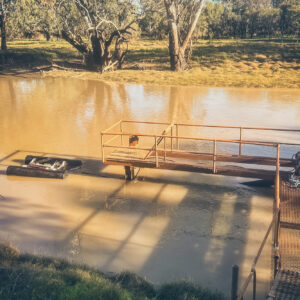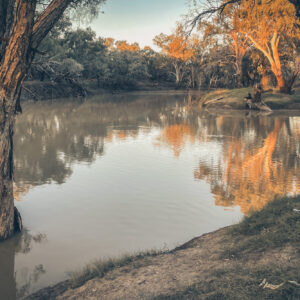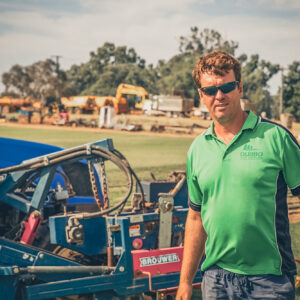Big lift for native fish: modern screens and Olympic weightlifting converge
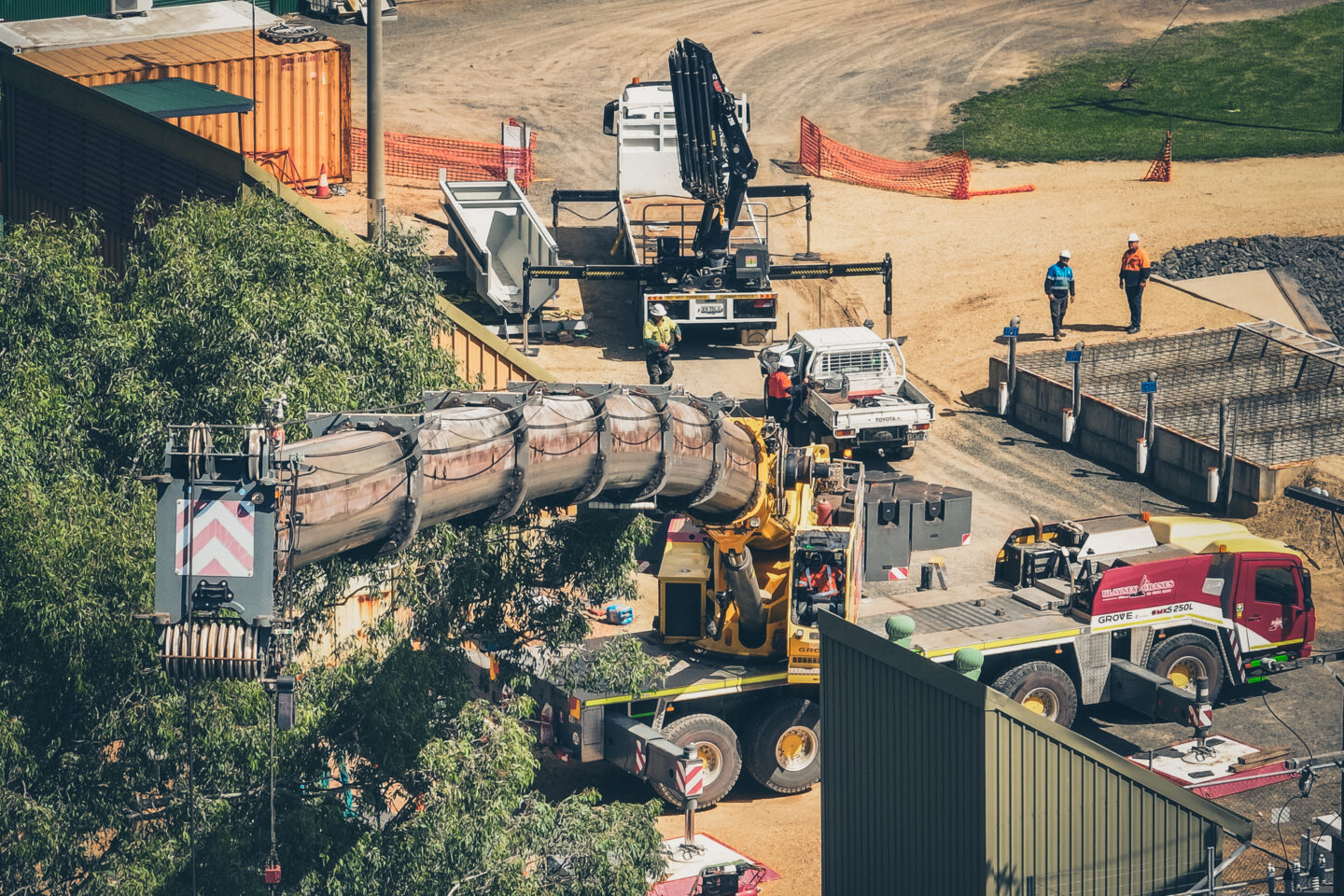
As Olympic weightlifters go for gold in Paris this week, heavy lifts are also happening in the Central West of NSW. While athletes showcase their strength and skill on the global stage, another impressive feat of lifting is taking place much closer to home.
This week, a crane was tasked with lifting a massive 17-ton piece of pump-screening infrastructure into place, marking a significant milestone in the ongoing efforts to protect native fish and farms of the Macquarie River valley.
Three troughs and a manifold were moved into position. Modern fish screens will be attached to the manifold, creating a barrier to keeps native fish and debris where they belong – in the river and out of irrigation infrastructure.
The stainless steel wedge-wire screen is designed with a large surface area, but a fine, 2-mm mesh. This reduces the velocity of water entering the diversion, without impacting the volume of water that can be accessed. It replaces traditional ‘trash racks’ that provide very limited, if any, protection for fish or pumps.
Unlike the Olympic weightlifters striving for gold medals, the crew involved in this project won’t be standing on a podium or receiving accolades for their efforts. However, their work is not without its rewards.
This installation is part of the broader Macquarie River Screening Program, which will screen over 20 pumps across 7 sites between Dubbo and the Macquarie Marshes. Together, these screens will create the following benefits.
- Protect over 566,000 native fish every year.
- Provide up to 1,797 ML/d of cleaner water to farmers.
- Reduce on-farm costs by effectively eliminating debris.
- Generate an estimated $31m/yr of public benefits.
The 17-ton lift is the largest that screen manufacturer AWMA has done to date, including previous personal best lifts on the huge Rangitata Diversion Race on New Zealand’s South Island. That screening system features seven t-shaped cylinder, each 8 metres in length and 2.1 metres in diameter. Smaller sites, like the one pictured above – installed this week as part of the Northern Basin Toolkit – can be fitted with relatively-simple winch systems that allow the screen to be retrieved for inspection and servicing.
While the spectacle in Paris captivates audiences with displays of human strength and determination, efforts in Central West NSW quietly contribute to a more sustainable future.



